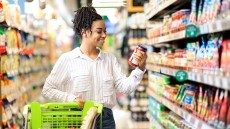Plastic tea bags release microplastics into brew, says study

A single plastic teabag at brewing temperature can release around 11.6 billion microplastic and 3.1 billion nanoplastic particles into water, according to researchers at McGill University in Montreal, who say further research into possible health effects of microplastics is needed.
But the Tea and Herbal Association of Canada says plastic tea bags only account for a ‘very small portion’ of the Canadian tea market, with most tea packaged in paper teabags. It points out that plastic tea bags are approved by food authorities for use.
Tea and microplastics: the study
The researchers considered four different unnamed commercial teas packaged in plastic tea bags in their study. They cut open the bags, removed tea leaves to ensure particles came from the packaging and not the tea, and then heated the tea bags in containers of water to simulate brewing conditions.
Using electron microscopy, the team found that a single plastic teabag at brewing temperature released about 11.6 billion microplastic and 3.1 billion nanoplastic particles into the water.
These levels were “thousands of times higher than those reported previously in other foods,” say the researchers. The plastic load for one cup of tea was estimated to be 16 μg; whereas previous studies have found salt to contain 0.005 μg/g.
In a separate experiment, researchers treated water fleas with various doses of the micro and nanoplastics from tea bags. “Although the animals survived, they did show some anatomical and behavioral abnormalities. More research is needed to determine if the plastics could have more subtle or chronic effects on humans,” the scientists say.
Tea bags: paper or plastic?
Tea bags can be made from plastic or from paper; while paper tea bags may also use a small amount of plastic as a sealant.
A number of tea brands have been making the move towards completely biodegradable tea bags, finding alternatives to plastic and plastic sealants. But the McGill researchers say that some brands are moving in the opposite direction.
"Although mindful consumers are promoting the reduction of single-use plastics, some manufacturers are creating new plastic packaging to replace traditional paper uses, such as plastic teabags,” they say. “The increasing presence of micro- and nano-sized plastics in the environment and food chain is of growing concern."
Premium pyramid, ‘silky’, tea bags, for example, are sometimes made from food grade nylon.
But the Tea and Herbal Association of Canada (which counts Keurig, Nestle, Tetley and Typhoo among its members) says the majority of tea bags used in Canada are made from paper. Any material used has been assessed by the Canadian Food Inspection Agency, as well as other agencies around the world.
“This study was conducted on thermoplastics (Nylon) and polyethylene terephthalate (PET) products only. This represents a very small portion of our market in Canada,” the Tea and Herbal Association of Canada said.
“The vast majority of teabags in the Canadian market are paper teabags. We have some companies who have moved to the ‘fancier’ teabags but have adopted polylactic acid (PLA). This is a plant-based alternative which is fully biodegradable and was not a part of the study.
“The Tea and Herbal Association of Canada would like to reassure consumers that drinking tea is a safe and healthy lifestyle choice. Consumers should continue to enjoy the many varieties of tea for its health- promoting attributes as well as its delicious taste.”
Microplastics: What's the issue
Microplastics and nanoplastics are tiny plastic particles which come from the break down of plastic. While a human hair has a diameter of around 75,000nm, a nanoplastic can be less than 100nm in size.
Microplastics have been in the headlines since a 2018 study from Orb Media, which claimed that 93% of bottled water shows ‘some sign of microplastic contamination’: finding roughly twice as many plastic particles in bottled water as tap water.
Microplastics in drinking water are a concern because they are ingested, with the effects on the human body unknown. However, microplastics are also found naturally across the environment in soil, air and water.
In August, the World Health Organization released a health review into microplastics. It summarized that, while there is not enough information to come to a firm conclusion, the evidence that is available does not suggest cause for concern.
While larger microplastic particles are considered inert when ingested and may pass through the digestive system without being absorbed, the potential uptake of very small microplastic particles is a topic of emerging research interest, it said.















